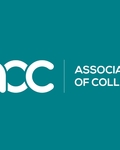Skills & Local Economy
Skills
Getting skills development right is one of the key challenges for college staff. Employers continue to report skills shortages and continue to spend huge sums (more than £42bn a year) on training their people to fill these gaps. The best prepared students will be able to show prospective employers they can help fill these gaps and so give themselves an edge in the jobs market.
In 2019, a Department for Education survey highlighted that 25% of vacancies in the area including the Sport and Physical Activity (SPA) sector were due to skills shortages. In other words, employers receive applications that do not provide the skills that they need in a quarter of their job adverts. This level of skills gap sits about halfway between sectors with the highest gap (construction and manufacturing at 36%) and the lowest (finance and public administration at 13%).
The DfE skills report does not tell us much in terms of the skills that are specifically missing in the SPA sector. To fill this gap we have creates regional reports that uses Jobs Postings Analysis (JPA). By identifying and categorising job adverts and then breaking them down into skills, JPA can identify the top 10 common and hard skills that appear on job adverts for the main occupations in sport and physical activity. Broadly speaking, hard skills relate to the technical requirements of the role and common skills relate to transferrable skills, knowledge and behaviours needed.
Local Economy and Jobs
In England, the Sport and Physical Activity (SPA) sector was estimated to be worth approximately £14-£15 billion in 2020. The growth in the SPA sector since 2012 has outpaced the wider recreational sector as well as the wider economy. This growth has been seen mostly in the areas of fitness facilities and operation of sports facilities with slower growth in the sports and recreation and “other” sport activities areas. The activities of sports clubs have stayed relatively constant.
A 2020 Sport England report estimated the social value of community sport in England. This is the value of sports activities that can be calculated in addition to the data on sales and wages broken down into 16 social outcomes, for example the value of reduced GP visits, crime reduction and social capital. Sport England found that these benefits were worth £71.61bn in England and created a social return on investment of £3.91 for every £1 invested in delivering these services by the public sector, private companies, charities and individuals. The full value of the 16 social outcome measures can be seen in Table 1 and shows the breadth of the impact that the SPA sector has on society.
Whilst there are short-term challenges to the SPA sector, as there is to the whole economy, from COVID-19 and Brexit, the longer-term outlook is good. The current spotlight on public health combined with the rising importance of lifestyle considerations and rising income would suggest a positive outlook for the sector and the main long-term threat to jobs from automation should not be significant in a sector that relies on expert human input to engage, motivate and embed SPA into customer’s lives. In fact, the current trend is that technology compliments human input and is creating new roles in, for example, data analysis and insight.
We have created a set of regional jobs and economy reports to support colleges with their curriculum planning.
£13.8bn The Gross Value Added figure in England from community sport activities in 2020.
£15.04bn The total wages in the SPA sector including direct and supply chain wages in 2020.

